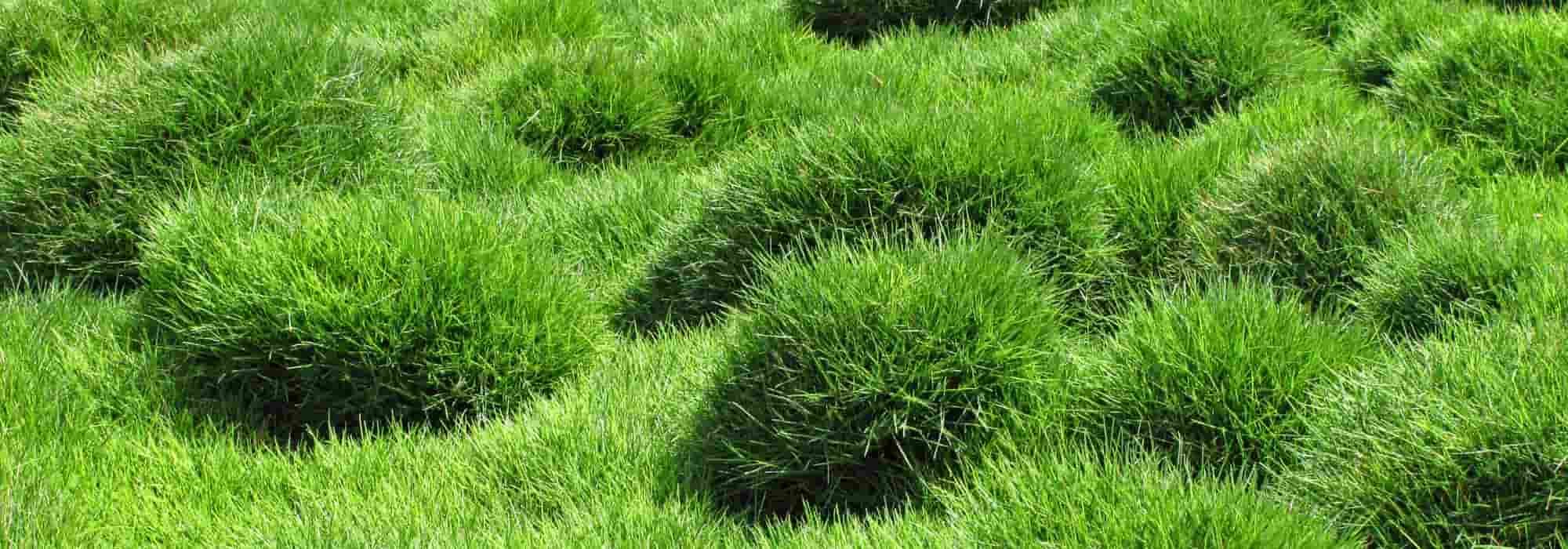
Zoysia tenuifolia or Mascarene grass : planting, growing, and care
Contents
Zoysia in a nutshell
- A small grass from the Poaceae family, Zoysia tenuifolia is an alternative to traditional lawn.
- It features semi-evergreen foliage with fine, tender green blades, very dense and particularly resilient.
- Mascarene grass adapts to all situations and all types of soil.
- Zoysia tenuifolia requires minimal watering and mowing.
- The more it is trampled, the denser it becomes, making it an economical and eco-friendly solution to replace short grass meadows in Mediterranean and oceanic climates.
The word from our expert
If you dream of a lawn that requires (almost) no maintenance or watering and only needs mowing two to three times a year, Zoysia tenuifolia is the perfect solution. Indeed, this grass, also known as Mascarene grass, with its tender green hue, closely resembles a short grass meadow due to its carpeting qualities. Equipped with running rootstocks, this groundcover plant forms a dense tapetum made up of very fine shoots with a velvety texture. Walking on this grass is an absolute pleasure, thanks to its incredibly soft touch.
Highly adaptable, this grass is also resistant to everything—sea spray, salty soil, drought, and heat… Moreover, it can thrive in all types of soil (except those that are too chalky or too acidic), including dry and sandy soils, whether in full sun or shade.
Available in buckets, as well as in rolls or slabs like most lawns, Zoysia tenuifolia can also be planted on slopes, rockeries, or even green roofs. The only drawback, which limits its planting to Mediterranean and oceanic climates, is its lower hardiness. Indeed, Mascarene grass is hardy down to approximately -10°C. During the winter months, its semi-evergreen foliage turns yellow, but it regains its beautiful spring colours by the end of February.
Botany
Botanical data
- Latin name Zoysia tenuifolia
- Family Poaceae
- Common name Mascarene grass, Korean velvet grass
- Flowering none
- Height 5 to 10 cm
- Exposure all
- Soil type all types (except calcareous or acidic)
- Hardiness -10°C
As its vernacular name suggests, Zoysia tenuifolia, also known as Mascarene grass, originates from the Mascarene Islands, an archipelago in the southwest Indian Ocean comprising Réunion, Mauritius, Mayotte, Madagascar, the Comoros, and the Seychelles. Needless to say, this small, carpet-forming grass has semi-tropical origins. Zoysia tenuifolia thrives in sufficiently warm areas due to its sensitivity to cold.
This perennial herbaceous plant, used as an ornamental and decorative lawn in our latitudes, owes its name to the Austrian botanist Karl von Zois (1756–1800). As for the term “tenuifolia,” it means “with small leaves” in Latin—a term perfectly suited to this grass from the Poaceae family, which boasts very fine, short foliage with a velvety texture and dense growth. Thanks to its dense foliage and running rootstocks (similar to those of couch grass!), Zoysia tenuifolia is considered an excellent alternative to traditional lawns.
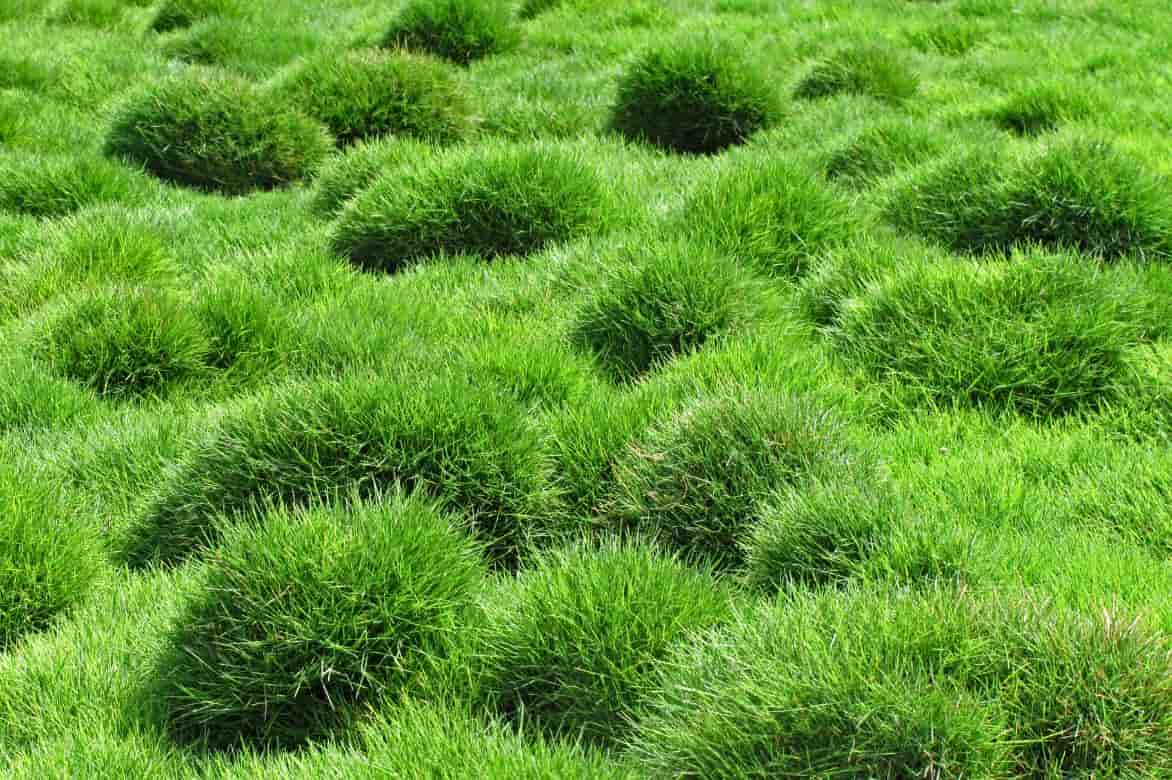
Zoysia tenuifolia forms a dense, undulating carpet
Indeed, it forms a very spreading ground cover, with small tufts of bristly leaves, extending 40 to 50 cm in width without ever exceeding 5 to 10 cm in height. This grass displays a tender, spring-like green. In winter, in regions where temperatures can drop to -5°C, it tends to yellow. But by March, at temperatures above 15°C, it resumes growth and regains its beautiful green colour. However, with its hardiness not exceeding -10 to -12°C, it can only thrive in the greater Mediterranean region and along the Atlantic coast.
With relatively slow growth, this stoloniferous grass forms a ground cover that becomes denser with foot traffic. The more you walk on it, the denser its long, flat, slightly curved leaves become!
Sold in buckets (at a rate of 7 to 10 plants per m²), Zoysia tenuifolia forms a fine, soft-to-the-touch carpet, slightly bumpy with small mossy domes. From a distance, it resembles a green sea undulating in gentle waves. It also adds a Japanese-inspired touch to gardens where it is planted within 1 or 2 years. Due to its popularity as a lawn, Mascarene grass is now available in rolls or sod. In this form, it will have a flatter appearance, closer to that of an ordinary lawn.
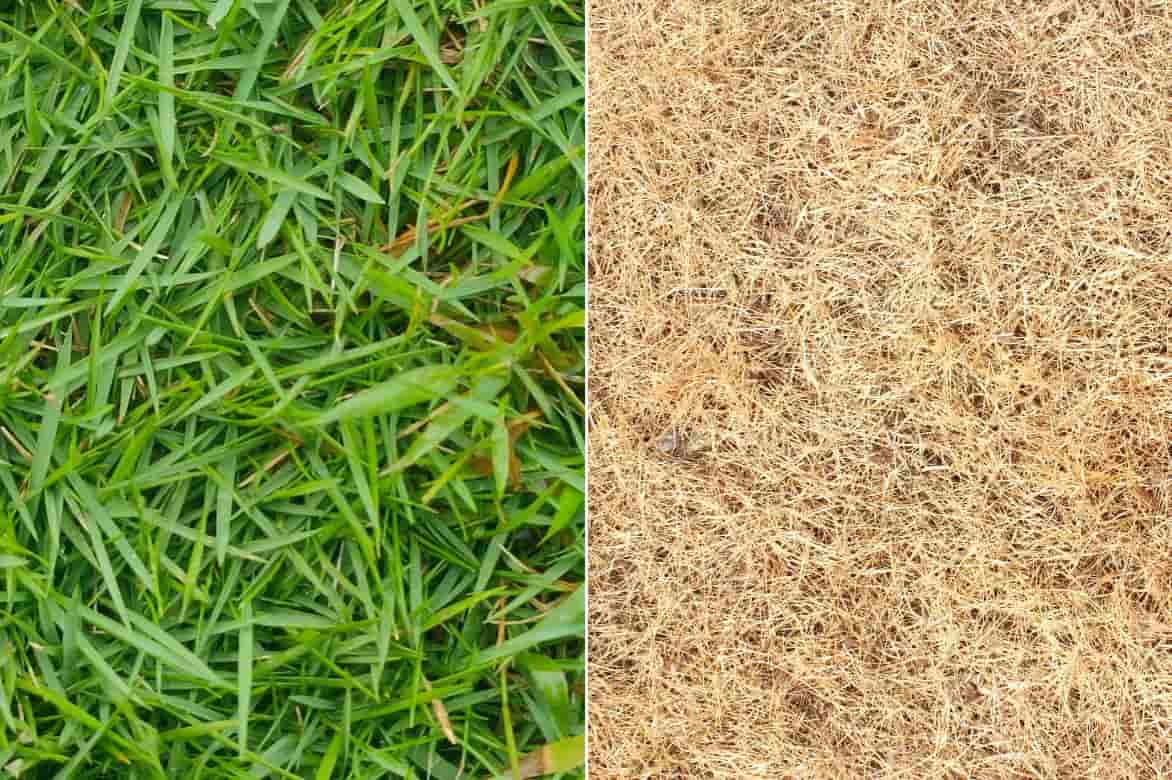
Below -5°C, the bright green blades of Zoysia tenuifolia tend to yellow. But with the arrival of spring, they green up again
Nevertheless, Zoysia tenuifolia far surpasses all other lawns in terms of qualities and properties. These characteristics make it an excellent solution in this era of climate change. Indeed, its resistance to heat and drought allows it to cover an area with water needs significantly lower than those of a normal lawn. Water consumption for irrigating Mascarene grass is reduced by 50%. It is therefore an eco-friendly alternative to replace lawns in hot, rain-scarce regions subject to water restrictions.
Another advantage of this grass lies in its relatively slow growth. As a result, mowing is infrequent or even optional to achieve a tufted carpet effect. It is mainly in areas with some rainfall that it will need mowing once or twice a year.
From summer to autumn, this grass may produce insignificant inflorescences composed of tiny yellow flowers.
The best species
While Zoysia tenuifolia, also known as Zoysia matrella, is the most readily available variety, widely offered by landscapers in regions with a mild climate, there are other less common varieties. Zoysia japonica is becoming more popular: this grass can reach a height of 20 cm. Its deep root system allows it to withstand drought, and it can tolerate temperatures as low as -15°C. As for Zoysia macrantha, native to Australia, it is a perennial that also forms a very dense tapetum.
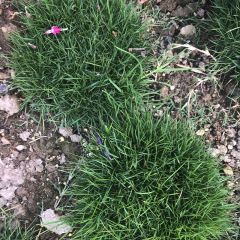
Zoysia tenuifolia
- Höhe bei Reife 10 cm
Planting
Adaptable” is the most fitting adjective to describe Zoysia tenuifolia. Indeed, this perennial running herb with bright green shoots can adapt to all types of soil, whether neutral, slightly alkaline, or slightly acidic, poor and dry, or even sandy or stony. It even tolerates saline soils, which is why it is highly suitable for coastal gardens. Moreover, it is completely unfazed by sea spray. Only waterlogged, poorly drained, or water-soaked soils are unsuitable for it.
In terms of exposure, Zoysia tenuifolia prefers sunny or partially shaded locations. However, it can grow in the shade, though it will be slightly less vigorous there.
When to Plant?
The ideal time to plant Mascarene grass is in spring, from February-March to April, or alternatively in autumn, in September-October, though growth will be slower.
How to Plant?
To achieve a dense, verdant meadow within a year, you will need to plant between 7 and 10 buckets of Mascarene grass per square metre. Under favourable climate conditions, each young plant will spread to 30 cm in diameter within a year. With fewer buckets, the area should be covered in two years, as Zoysia tenuifolia has relatively slow growth.
Ensure the buckets are planted in a staggered pattern.
- Work the soil thoroughly to loosen it
- Carefully remove any weeds that could compete with the Mascarene grass
- Use a rake to level the surface
- Soak the root balls in a bucket of water
- Dig holes twice the size of the root balls
- Place the Zoysia tenuifolia root balls and fill the holes with the excavated soil
- Water generously.
What About in Pots?
It is entirely possible to grow Mascarene grass in a pot or a planter for a terrace. Plant it in high-quality compost, over a layer of gravel or clay pebbles. Don’t hesitate to plant two or three young plants, depending on the pot’s diameter, to create a fuller effect.
Maintenance and Care
In the first year, and even the second year, Zoysia tenuifolia requires some care to achieve a perfectly homogeneous short grass meadow.
For the two years following planting, watering should be consistent and regular to maintain the green colour and, most importantly, encourage the development of the young plants. After this period, watering becomes truly necessary only during periods of intense heat or drought. In regions with a moderate climate, watering remains facultative. In hot and dry climates, water should be added every 10 to 15 days.
In the first year, it is also important to weed the Mascarene grass carefully. Indeed, adventives create harmful competition for Zoysia tenuifolia. Once the grass is well-established and fully developed, weeding becomes unnecessary, as the density of the tillers prevents the germination of adventive seeds.
Fertilisation with a slow-release fertiliser is advisable once a year, at the beginning of spring. The process can be repeated in July or August.
Mowing is required only once or twice a year, typically in June and/or September.
Pests and Diseases
The Zoysia tenuifolia has no known pests or diseases.
Propagating
Mascarene grass propagates by dividing clumps in early spring. Simply select the largest and tallest clumps and remove a section with a tarp. The key is to ensure that each fragment taken has stolons and young shoots. The grass sections should be replanted immediately on a flat surface, possibly enriched with compost.
Associating
Zoysia tenuifolia is therefore an eco-friendly alternative for greening a grassy area, such as a short grass meadow in a small garden. It will form a dense green tapetum, more or less bumpy, depending on the regularity of mowing. It can also effectively cover a slope or a rocky area, fill gaps between paving stones in a pathway, or even between stepping stones.
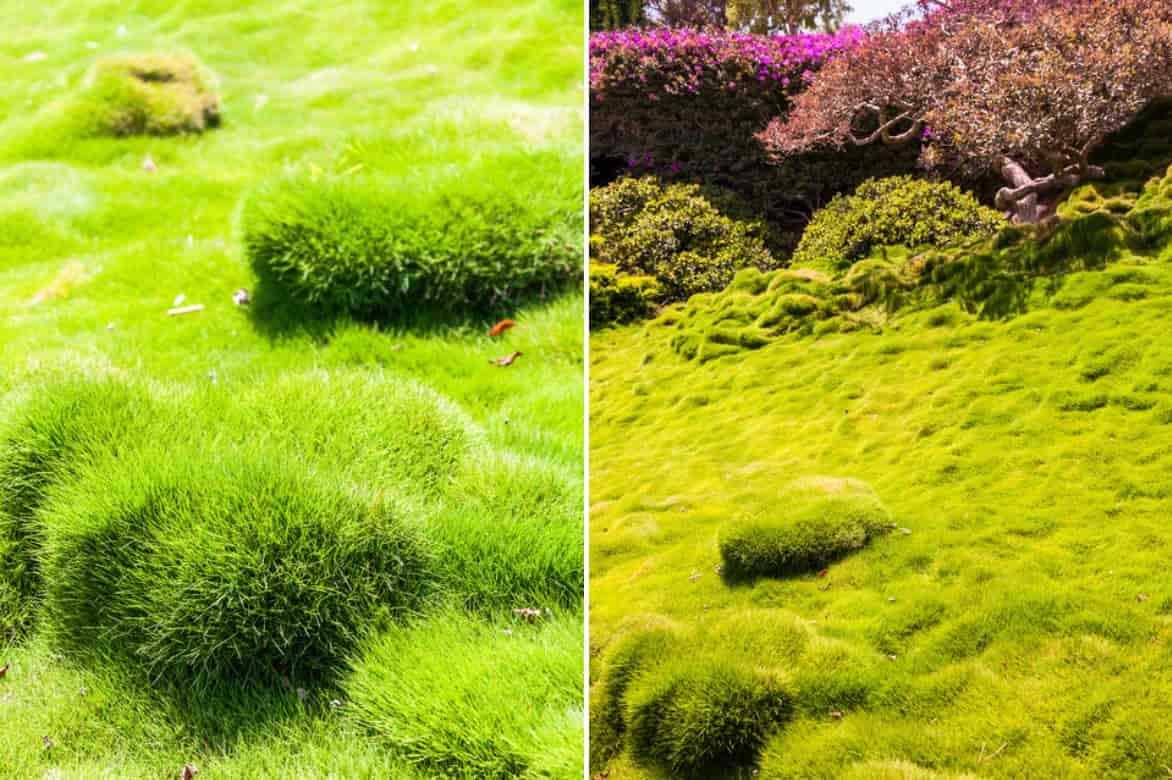
zoysia tenuifolia is ideal for turfing small gardens as well as slopes
To add a splash of colour, you can pair Zoysia tenuifolia with other ground-cover plants, perfect as alternatives to traditional grass. For instance, Mascarene grass will look stunning alongside Achillea crithmifolia or Achillea odorata, which form dense tapetums with fine, downy foliage. The company of Thymus will also suit this grass, as will Phyla nodifflora, perfect for dry and trampled soils.
Mascarene grass can also be planted on green roofs.
To learn more: Which grass alternative should you choose?
To go further
- Discover our tutorial: how to propagate Zoysia?
- Subscribe!
- Contents
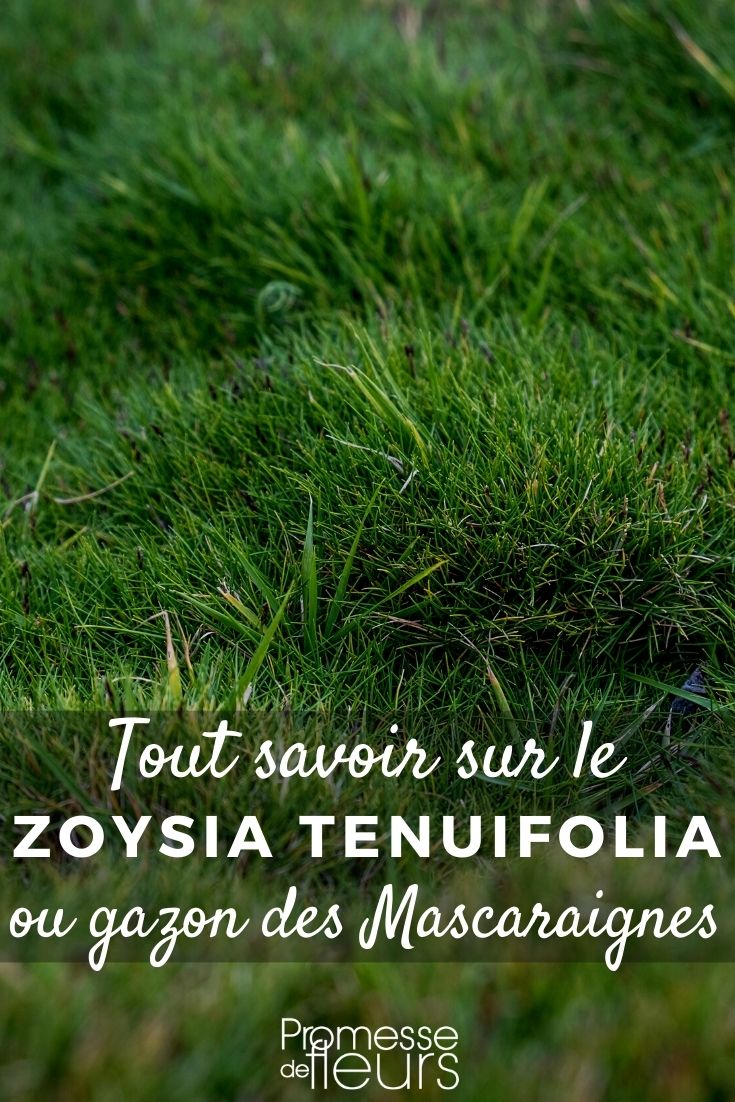































Comments